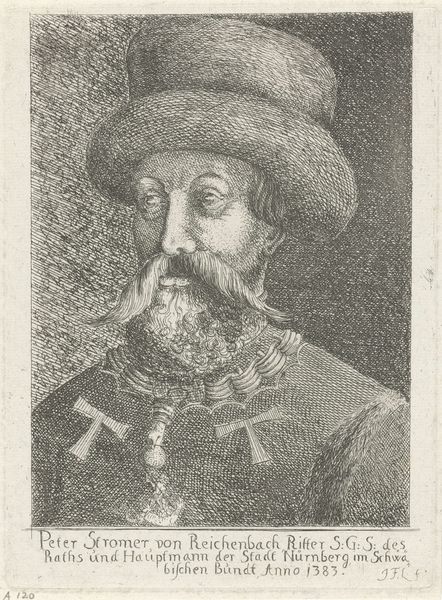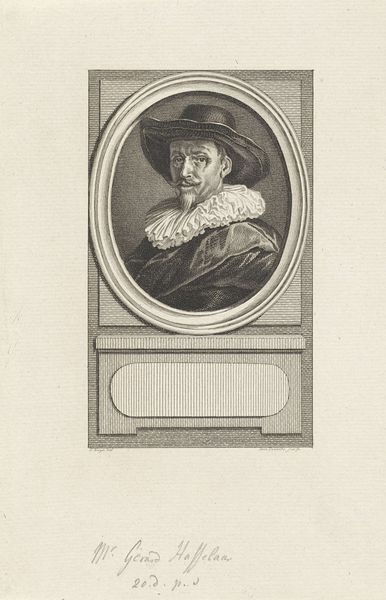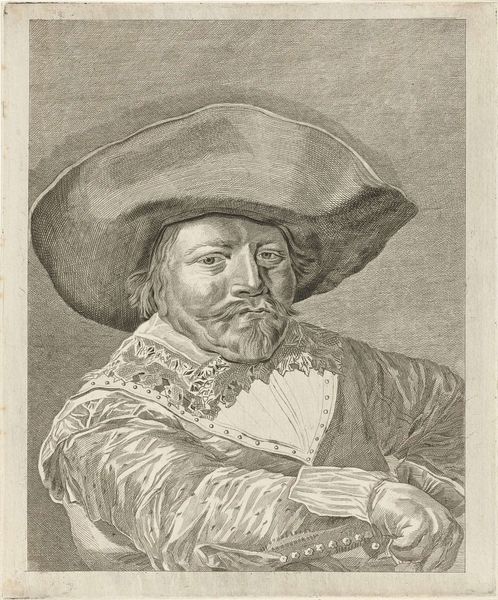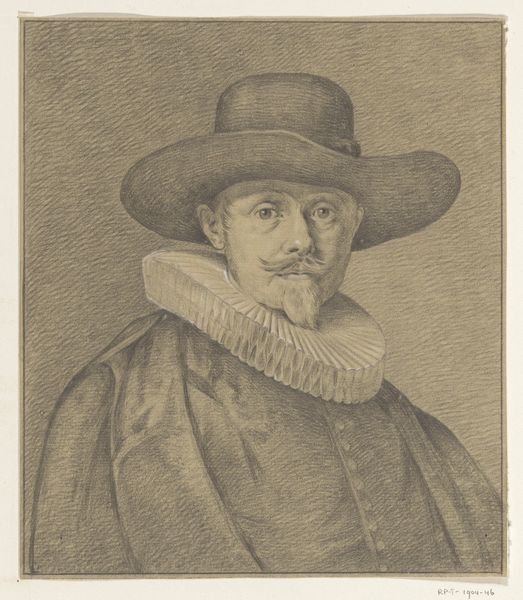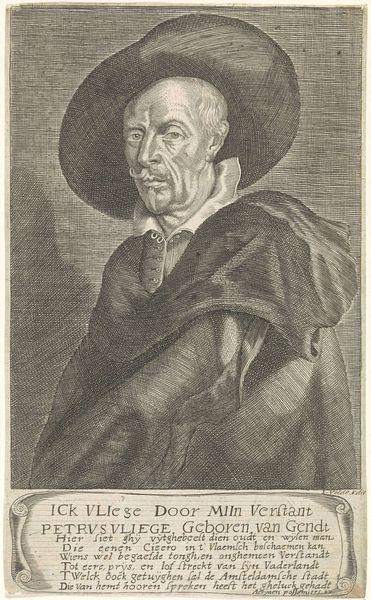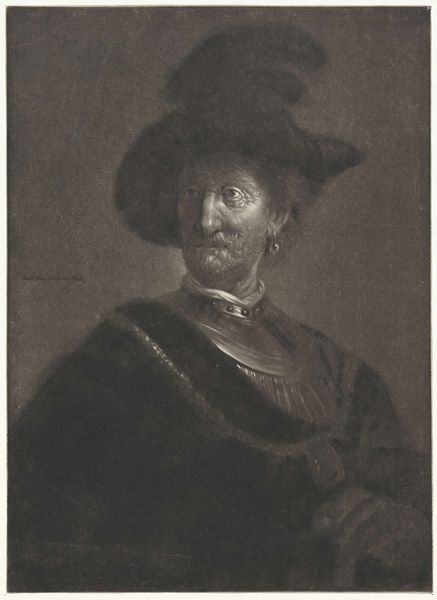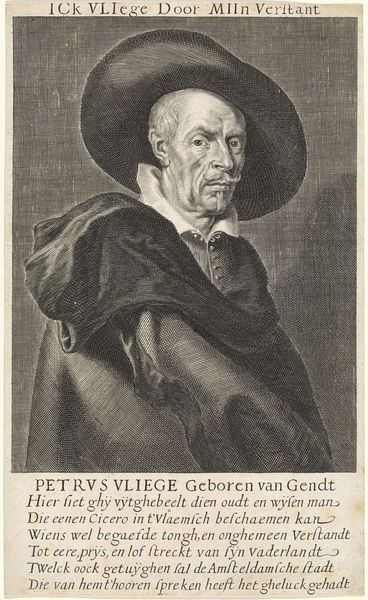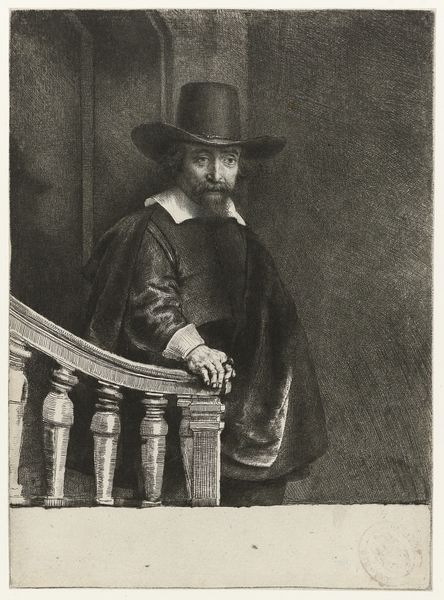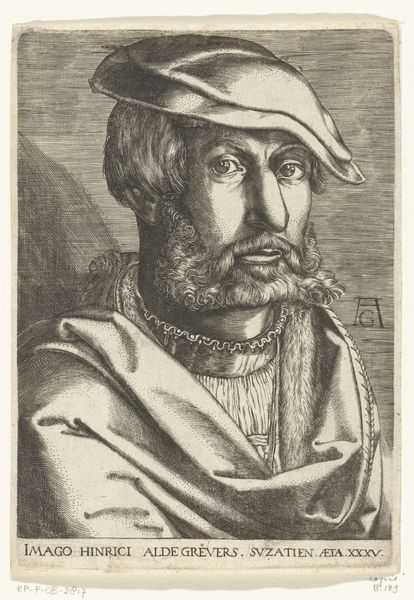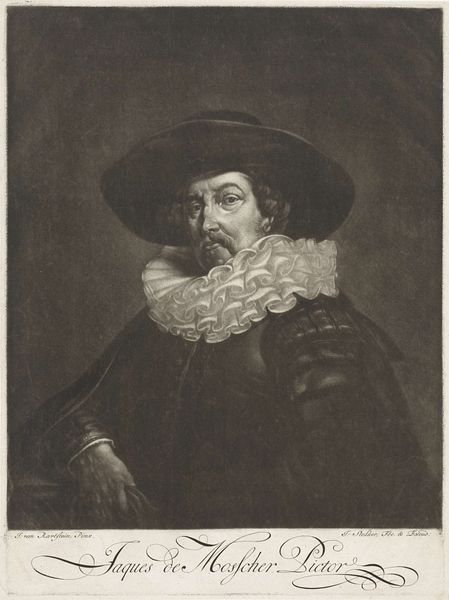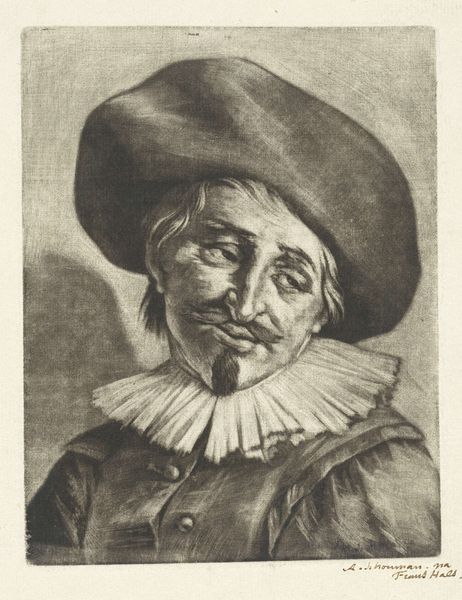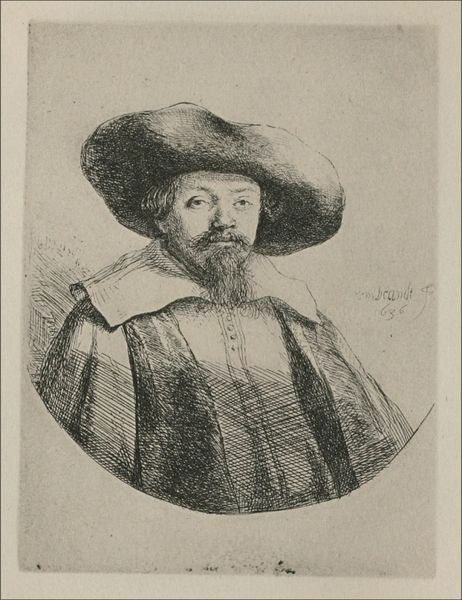
print, engraving
#
portrait
#
baroque
# print
#
engraving
Dimensions: height 120 mm, width 99 mm
Copyright: Rijks Museum: Open Domain
This is Franciscus van Schooten's etching, "Portrait of a Man with a Large Hat," made sometime between 1601 and 1646. At first glance, the tight composition—dominated by the man’s face, large hat, and ruff—grabs our attention with its intricate detail. The artist uses a dense network of fine lines to construct form and texture, creating a rich visual experience. Schooten’s technique, particularly his strategic use of hatching and cross-hatching, evokes a palpable sense of depth. The contrasting light and shadow not only define the man’s features but also bring a dramatic quality to the portrait, drawing the viewer's gaze. Consider how this treatment relates to semiotic interpretation. Each stroke, each shaded area, contributes to a constructed image that signifies not just a man, but perhaps also status, character, or even a story. The hat, an obvious signifier of status, together with the ruff around the neck, frames the face as a focal point. Ultimately, the delicate balance of light and shadow, meticulously etched into the plate, serves as a powerful means of expression. It’s a reminder that artistic meaning resides not just in what is depicted, but in how it is rendered.
Comments
No comments
Be the first to comment and join the conversation on the ultimate creative platform.
